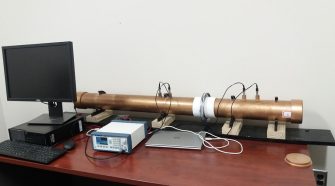Hot Topics

Fiber innovation follows its natural course
Fiber technology development is critical to the advancement of textile applications in the modern age for many reasons. The 20th-century ideal was to create mass production of plastic fibers that …

Student Spotlight: Turning textile waste into thermal and acoustic insulation
Shafiq Islam developed a strong interest in textiles pursuing his undergraduate and master’s degrees in textile engineering in Bangladesh, while also working in the textile research and development sector. As …

Sustainability should still be more than just a buzzword
Not so long ago, sustainability was the buzzword in the fiber industry with several companies announcing progress in terms of recycling or using bio-based alternatives. The hope is that the …

COVID-19 supply & demand
As we consider how the COVID-19 pandemic is impacting the nonwovens industry, it is important to start with an understanding of the numerous nomenclature issues associated with nonwovens. The …

A strange brew – genetically engineered polymeric fibers
Over the past century, man has truly harnessed the power of artificial polymer materials; polymeric fiber materials have allowed for applications not possible with the use of natural fibers. Driven …

